P.J. SOLES TALKS CARRIE
DE PALMA: "NEXT AUDITION, BRING YOUR HAT"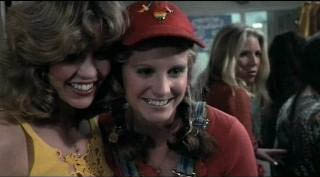 P.J. Soles
P.J. Soles recently discussed her career to
The A.V. Club's Nathan Rabin, where she talked extensively about her experience auditioning for and filming
Carrie with
Brian De Palma. Soles talked about how De Palma liked her overalls and baseball cap look, and how he expanded her role after casting her as Norma Watson. She also talks about getting a ruptured eardrum while filming the climactic scene of the film, and how De Palma's friend
Steven Spielberg would come by and ask out all the girls in the cast, eventually landing a date with
Amy Irving, whom he would go on to marry. At one point, Soles mentions that De Palma "was one of the rare directors who wanted us all to go to dailies." Below are some excerpts from the interview:
PJS: After the first boyfriend, I got married to a musician, Steven Soles, and we had a nice time together. It seemed that I really wanted to move to L.A., because the soap opera [Love Is A Many Splendored Thing] is fine, but it wasn’t something I wanted to stay with. I wasn’t especially a Broadway type. I liked film acting better. I didn’t want to stay up late. I wasn’t a smoker, a drinker, or a drug-taker. So that kind of Broadway life—not that that’s what they do. But they do stay up late and hang out at Joe Allen’s until 2 in the morning, and that just wasn’t for me. So I left there and came to L.A. by myself, one suitcase, checked into the Magic Hotel right there on Franklin, right behind Grauman’s Chinese Theater. The first audition—this is the story of my life—when I first auditioned through my modeling agency, Nina Blanchard, they said, “Everyone in town is going to see Brian De Palma and George Lucas. They just want to see all the teenagers, so go up.” And I walked into the office after waiting two hours sitting on the floor in the hallway with everybody else, and we’re all young, so we’re happy and having a good time, you know, laughing. George Lucas and Brian De Palma are sitting in two chairs behind one desk, and they both just looked me up and down and Brian says, “I’ll put her on my list.” George just nodded. Then as I turned to go he said, “Next audition, bring your hat.” I was wearing the red baseball hat, which was something I really loved and wore, and it was me. And I had on a pair of overalls and a striped shirt, pretty much the outfit I wore in Carrie.
I got to go to the second audition, which was at Brian’s house. Pretty much everybody that ended up in the cast, he had chosen right away. We had three more auditions at his house before we actually did the screen tests. He just wanted to see which person fit which characters best. We took turns reading different parts and scenes in the script for a couple hours, then finally did the screen tests. I do remember that Jack Fisk was already the set designer, and he kept begging Brian to see his wife, Sissy Spacek, and Brian kept saying no, because he really thought Amy Irving was going to be Carrie. Finally, the day of the screen tests came, and Sissy had not been in any of the auditions, but she came in, and apparently when they watched the screen tests, she blew everybody away, and there was no question that she was going to be Carrie, which left Amy Irving with the other part.
AVC: Which is not a bad part.
PJS: Well it’s obviously not a bad part, but Carrie was the lead, and that’s what Amy—with her training at the Royal Academy Of Dramatic Arts in London—that’s what she was looking for. [Laughs.] But it’s okay. She ended up with Steven Spielberg, who used to come to the set all the time, because Brian said, “There’s a lot of cute girls down here. Come down to the set.” And he’d hang out and he’d ask us all out and none of us said yes, except for Amy. So she ended up marrying him. [Laughs.]
AVC: So Steven Spielberg asked you out?
PJS: Yes, and I just kind of giggled and went “Well, I’ll think about it. Hee-hee-hee.” [Laughs.] And Nancy Allen had her eyes set on Brian De Palma, who she eventually married. So right from the beginning—even though he had a girlfriend at the time—she liked Brian, and I was not particularly enamored. I did my screen test with John Travolta, and I went over to his place a couple times, but he and I were just really good friends. He was a really nice guy.
AVC: The actual filming process seemed pretty dramatic, like the part when you get knocked unconscious with the hose.
PJS: Well yeah, I wasn’t really knocked unconscious, but the fire hose they wanted to use to bat my head around, the fire chief said he wasn’t going to do it, that it was too dangerous, ’cause the force of the water would be too strong. And so Dick Ziker, the stunt coordinator, said, “Well, I’ll just man the hose. It’s okay, and we’ll just put less water pressure on.” But I guess he lost control of it, and it just burst out and flipped my head to the side, and the full force of the fire hose went into my ear and broke my eardrum. And when you break your eardrum, you lose your sense of equilibrium, so I kind of slid down to the floor. The grips came running over, picked me up, and brought me to my dressing room. So it wasn’t a concussion. I wasn’t knocked out, but I did have a ruptured eardrum, and for six months I had a loss of hearing, but my hearing is really good now. There is a little scar there, but it healed fine. Kind of bizarre.
AVC: Did you have insurance?
PJS: Well, you get workman’s comp and the insurance from SAG. You’re covered during the shoot of the movie, and I was covered anyway. I went to the doctor once a week. He gave me some kind of shots and pills and all kinds of stuff, but the pain was unbelievable, and you can see it on my face, they kept that in. When I have that one grimace and then supposedly die—[Laughs.] That’s me just kind of going, “Aahh!” Then my head goes back and as I start to slide out of frame, they cut. So that was kind of interesting, but most of the filming and everything was pretty good. And we had a great time, and we shot that prom sequence for like, two weeks. We were at the MGM Culver City studios, and they had little houses, dressing rooms all around the outside set, inside the soundstage, so we could be there all the time. You had to always get there around 6 a.m., because Brian never knew when you’d be in the background or when he would pull one of the actors and say, “Okay, you’re sitting here.” So everybody always had to be on set all the time.
[Rabin then asks Soles about The Boy In The Plastic Bubble, a TV movie from 1976 starring Travolta]
PJS: Yeah, that’s because [Travolta] was in that movie—and it’s just great. Brian De Palma was one of the rare directors who wanted us all to go to dailies. It was like a party. After shooting, we’d all walk over together, at like 5 or 6 o’clock, to the little theater. And we’d sit down and watch the dailies from like, the day before. And John Travolta, whenever I came onscreen, he was just laughing hysterically. He just thought I was a riot. I got to ad-lib a lot of stuff. I was really loose, because I really only had one line in the opening of the script when we’re doing the volleyball scene, and I say, “Thanks a lot, Carrie.”
That was my one line. I was originally hired for two weeks, but after those dailies, Brian kept me on. He called my agent and he said, “We’re keeping her on for the rest of the shoot,” and then he just stuck me in whenever Nancy Allen was in, or needed something. I was collecting ballots, or, you know, “They’re all gonna laugh at you,” and then the blood goes on her head and I push my elbow into whoever—Betty Buckley—and then, “Ha ha ha!” They start laughing, and that’s all improvised. It was all just added stuff. Obviously there was much more of that, and a lot of dialogue between Nancy Allen and I, and we were really funny. So John Travolta just loved that. And like I said, we had done our screen test together, so I’d gotten to know him, and he was a really nice guy. So when he had the opportunity to do The Boy In The Plastic Bubble, he brought me and a couple other people from the movie to just be the students and have some parts, because he wanted to help us out. I thought that was really sweet.
SOLES: STEPHEN KING WAS "BANNED FROM THE SET"
Moving on to talk about her role in John Carpenter's Halloween, Soles went on to contrast her experiences on that film with the filming of Carrie...
PJS: I heard, of course, through all the interviews that have been done over the years—I didn’t know at the time, but John Carpenter said he had seen me in Carrie, and that’s why they asked me to come audition, even though he felt from the beginning that he would hire me. But the audition, I guess, cinched it. He did tell me at the audition, after I read one scene, he went, “Wow. You’re the only one that read the word ‘Totally’ the right way.” And I went, “Well, how else would you say it?” And he goes, “Well that’s why you got the part.” And I went, “Oh, I got the part?” He goes, “You got the part. Can you stay and pick out your boyfriend?” And I went, “Sure.” That’s very rare, for an actress or an actor to go up and have a director actually give you the part at the audition. Usually, you have to wait, like for the doctor to call and say whether you’re going to live or not. [Laughs.] So it was kind of nice. Carrie was a pretty big-budget movie at a real studio, with a director that had already done a bunch of things and had some notoriety, and Stephen King was the writer. He was banned from the set, but that was kind of an A-plus production, with a serious DP and blah, blah, blah and all that. So that was my first experience. But then with Halloween, the director was this genius wonder boy who was the writer, director, producer, along with his girlfriend. They were this team, and they were making this small movie, and it was just completely different, but it was really inspiring and a lot of fun, and also allowed me to do a lot of improvisation, because they just depended on the girls to expand their parts to bring some real life, being girls ourselves, to the characters. So it was a really collaborative spirit. We just felt like we were part of this small team, making this movie. Never a thought to, “Oh my God, it’s going to be a big hit and a huge franchise and it’s going to go on forever and fans are gonna love it.” It was simply, “Let’s try and make a good movie. And gosh, I hope I do a really good job with this part. So I can get another job.” You know? [Laughs.]
AVC: It sounds like you had a lot of faith in John Carpenter.
PJS: Yes, because he was very gentle. He was very tender. He really liked talking to actors. He really wanted you to be comfortable. He waited until you were ready to do the scene, and he has a lot of confidence. As with Rock ’N’ Roll High School, we usually only did one or two takes, because both films had a 21-day shooting schedule. You would have had to pick people that were gonna be part of the team, and be able to get the job done, and contribute more than what was on the page. So both of those experiences were similar in that way. Unlike Carrie, which, even though there was a lot of improv and everybody was really great, it was really more of a structured environment for Brian’s vision. I remember the first time we went to his house for one of those three auditions—his entire dining room, all the walls, were covered with the storyboards. It was like the entire movie of Carrie was drawn out on pencil and paper and taped up on his dining-room walls, and I was like, “What?” [Laughs.] “That’s how you make movies?”
AVC: Is there much of a separation between him as an artist and him as a person?
PJS: Well, I don’t know. As a person, I don’t know. He had a little bit of a sarcastic sense of humor. He wouldn’t say much after he’d shoot a scene, but if he smiled and said, “Okay, let’s move on,” then you’d know, “All right, they’re taking that take.” Otherwise, he’d go, “All right, let’s try it again,” but he’d never tell anybody how to do it again—maybe it was a technical reason, I don’t know, whatever. He wasn’t really a collaborative director with an actor, in terms of what you’re doing or how to change it, and maybe it was also because my part was not that big, and everybody, especially Sissy, who was the lead, knew exactly what she wanted to do. So he trusted that. In terms of the visual and what the scene was gonna look like and what equipment he was gonna use—like the spinning scene is Sissy Spacek and William Katt dancing—he knew what he was gonna do. He was more into technical aspects, the look of the picture. That was cool, because that made it a very successful movie, I think. It really was just a teen drama, yet he took it to another level, obviously with the telekinetic powers and just the look of the movie was pretty new for that time, 1976.
Later in the interview, Soles states that she is not sure why she was picked for a small role in Old Boyfriends, which was co-written by Paul Schrader, but speculates that it might have been "because Paul Schrader was friends with Brian De Palma. So he probably saw Carrie, he might have come to the set once or twice, I don’t remember." Soles also talked to Rabin about her role in 1999's Jawbreaker: "Yeah, well. [Writer-director] Darren Stein was a huge fan of Carrie and Halloween. He was like a kid. He was 26, so he was such a fan. He wanted William Katt and I, from Carrie, to be in the movie as the parents. We had a little bit more that ended up on the cutting-room floor, but that was kind of fun. It was fun to see William Katt again. His kids actually went to the same school as my kids. So I would see him from time to time and say 'Hi.' I thought that was a really good movie."
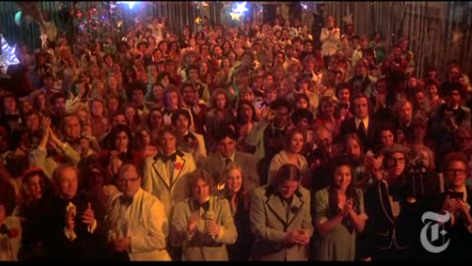 A.O. Scott at the New York Times posted a Critics' Pick Video essay this week about Brian De Palma's Carrie. Stating that the film "is like the combination of an after school special and a horror movie," Scott praises Carrie as "a grotesque, scary, comical, psycho-sexual tour de force." Elaborating, Scott continues, "Sometimes in the space of a single scene, the film pivots from B-movie exploitation to profound and disturbing insight. Brian De Palma is a master of both. None of the technical tricks or stylish flourishes feels at all superfluous. The feverish color scheme matches the lurid theme. The musical cues wiggily summon the ghost of Alfred Hitchcock, and together with the editing and the pacing, keep us in a perpetual state of uneasy suspense. And there's an artificial quality to the camerawork that makes everything feel more nightmarish than real." Scott then goes into a discussion of the acting performances in the film before concluding, "Gothic and extreme as it is, Carrie is fundamentally a coming-of-age story. Stephen King, for all his sensationalism, has an acute understanding of human psychology, and Carrie captures both the emotional volatility of the world of female adolescence, and the terrifying power of female sexuality. This is not a simple horror movie or revenge fantasy. It's a grand comic opera about innocence, shame, and anger. And it's exactly because Carrie is so small, so innocent, so helpless, that her rage inspires such awe."
A.O. Scott at the New York Times posted a Critics' Pick Video essay this week about Brian De Palma's Carrie. Stating that the film "is like the combination of an after school special and a horror movie," Scott praises Carrie as "a grotesque, scary, comical, psycho-sexual tour de force." Elaborating, Scott continues, "Sometimes in the space of a single scene, the film pivots from B-movie exploitation to profound and disturbing insight. Brian De Palma is a master of both. None of the technical tricks or stylish flourishes feels at all superfluous. The feverish color scheme matches the lurid theme. The musical cues wiggily summon the ghost of Alfred Hitchcock, and together with the editing and the pacing, keep us in a perpetual state of uneasy suspense. And there's an artificial quality to the camerawork that makes everything feel more nightmarish than real." Scott then goes into a discussion of the acting performances in the film before concluding, "Gothic and extreme as it is, Carrie is fundamentally a coming-of-age story. Stephen King, for all his sensationalism, has an acute understanding of human psychology, and Carrie captures both the emotional volatility of the world of female adolescence, and the terrifying power of female sexuality. This is not a simple horror movie or revenge fantasy. It's a grand comic opera about innocence, shame, and anger. And it's exactly because Carrie is so small, so innocent, so helpless, that her rage inspires such awe."

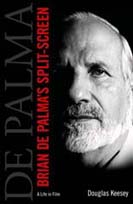
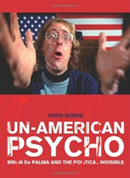

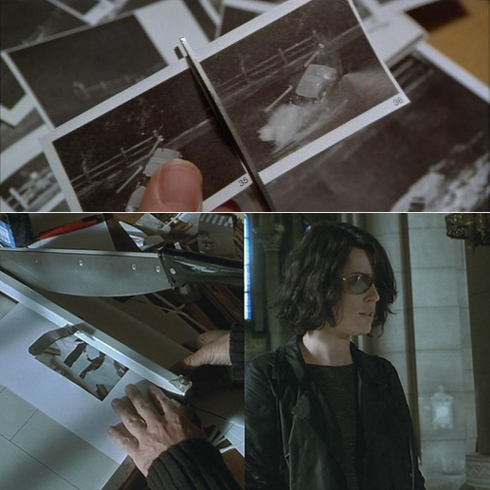
 Speaking of Hirsch, he recently served as editor on the Robert De Niro/Al Pacino cop/buddy movie Righteous Kill, which I finally watched last week (watch out for SPOILERS here). De Niro and Pacino got a
Speaking of Hirsch, he recently served as editor on the Robert De Niro/Al Pacino cop/buddy movie Righteous Kill, which I finally watched last week (watch out for SPOILERS here). De Niro and Pacino got a 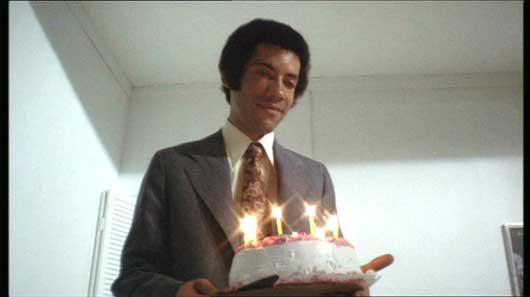
 P.J. Soles recently discussed her career to
P.J. Soles recently discussed her career to 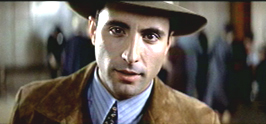 A couple of months ago,
A couple of months ago,  A "
A " During an interview with
During an interview with  Brian De Palma's Redacted was released today in Argentina under the title Samarra. One particularly insightful review of the film was posted by
Brian De Palma's Redacted was released today in Argentina under the title Samarra. One particularly insightful review of the film was posted by 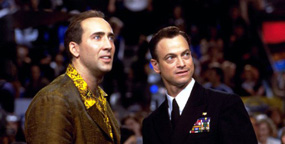
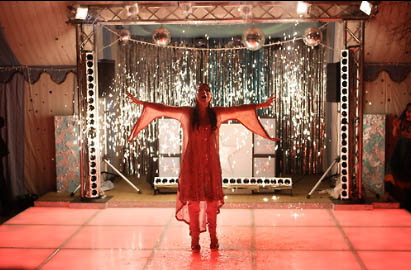 It's A Wonderful Afterlife is said to be a film that puts several genres into a blender with uproarious results. Director Gurinder Chadha talked to
It's A Wonderful Afterlife is said to be a film that puts several genres into a blender with uproarious results. Director Gurinder Chadha talked to